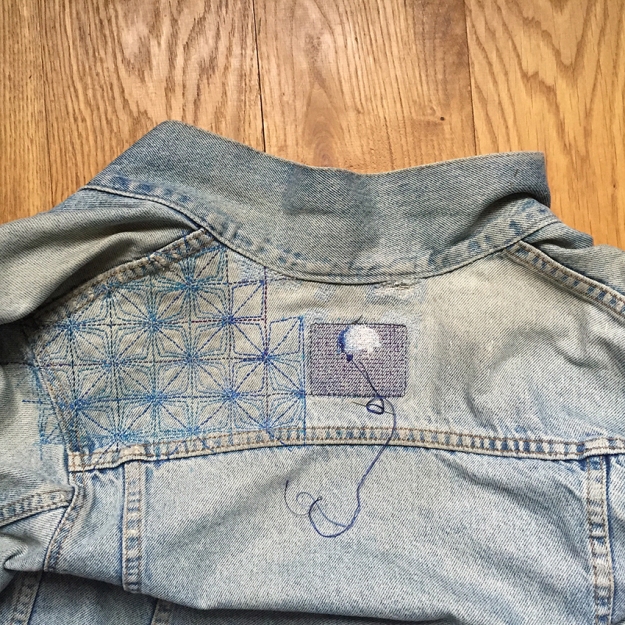When work is busy, I find myself dreaming up more projects for what little leisure time remains. The less time I have, the more I want to read, make, travel, buy. I’ve begun to suspect that some of this is a form of promising myself that I WILL be able to do these things at some unspecified time in the future, when I am at leisure to devote my leisure to the things I want to do. [Mostly. I don’t want to clean the bathroom, but I’ll still have to do it or risk our early deaths from disgust, embarrassment or horrible diseases.] There was a time when I could not resist a nice handspinning fleece – and didn’t bother trying. I just promised myself that there would be a time when I had time to spend sorting, washing, drying, combing or carding, spinning and then using that fleece. Fortunately a summer spent washing and drying and starting to comb some of the hoard taught me a lesson: I already have a lifetime’s supply of wool to spin. Not to mention cotton, silk and flax.
More productive and more fun than buying promises to myself is devoting some of my precious spare time to artistic mending. A couple of years ago I found an umpteenth-hand denim jacket in a flea market. It had a peculiar odour and was covered with a fine red-brown dust, but it fitted me: I bought it. I wore it a couple of times before washing it, which was just as well because I had time to start to love it before the washing machine revealed patches of incipient disintegration.
The yoke is in the worst condition, possibly due to exposure to the sun. I decided to learn sashiko [not sashimi, stupid computer] stitching by using it to attach a lining to the yoke, with embroidery thread shading from blue to red because colour can be fun. I tacked the lining to the yoke with a grid of white sewing cotton and began stitching. When I reached the first badly damaged area where only the white weft of the denim remains, I realised that sashiko alone would not be enough to take the strain, so decided to further reinforce those areas. I duplicate-stitched the twill furrows in various shades of blue; the more I did, the more my technique improved. I really like the finished effect (it’s better from a distance when you can’t see all the imperfections as below).

The rectangular area marking the position of the label on the inside of the yoke posed a problem. I could try to stitch through or skim the label and continue the sashiko across it, or I could use it to define a feature, which is what I did. I designed a motif suitable for cross-stitch, picked 6 shades from my ancient hoard of embroidery thread, donned my most powerful magnifying glasses, laid out a 6×6 thread grid, and started counting and stitching. Then stopped, counted, ripped out, and counted again before stitching again. Clearly I need practice at both counting AND stitching.
At this point I reserve judgement as to whether a motif was the right decision. Looking at the back of the jacket in its entirety, I think I’d have done better to continue the sashiko. But, with more work on the motif than in the photo above, it’s working and I like it. Even if variations in the thread thickness of the soft, worn denim mean that the stitching lacks precision: to paraphrase Tara, it loses precision but it gains life.


I could rip out the motif and the grid, re-do it elsewhere on the jacket, and continue the sashiko to cover the yoke. And I think I want to expand the sashiko beyond the yoke, too. After all, it’s only time. I should use the time I have to do my best. Who knows, this jacket may long outlive me. I do sometimes imagine people decades or centuries from now looking at something I made and wondering about me and my life, as I wonder about those who made the antique textiles I look at today.
Speaking of which, who wants to see some antique lace?







